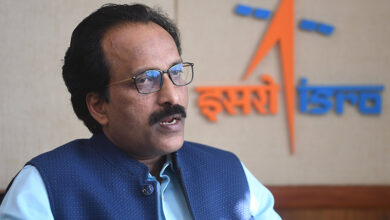Zombie viruses from 50,000 years ago may awaken due to climate change
As our planet gradually warms, ancient viruses, buried for tens of thousands of years, could awaken and pose fresh threats to public health.

The recent efforts of Virologist Jean-Michel Claverie to uncover the mysteries of ‘zombie’ viruses shine a new and chilling light on the calamitous potential of global warming. As our planet gradually warms, ancient viruses, buried for tens of thousands of years, could awaken and pose fresh threats to public health.
Climate change is a familiar horror story but as often as we focus our attention on the risks posed by rising sea levels, climbing temperatures, and increasingly destructive weather patterns, we rarely think about the likelihood of old, dangerous microorganisms resurfacing.
Spending over a decade studying ‘giant’ viruses, including some almost 50,000 years old from the Siberian permafrost, Claverie has been confronting the following troubling fact:
“The warmer climate, in addition to releasing trapped greenhouse gases like methane, has a lesser explored danger – dormant pathogens awakening as our planet thaws,”
In an interview with Aix-Marseille University, Claverie said, “With climate change, we are used to thinking of dangers coming from the south. Now, we realize there might be some danger coming from the north as the permafrost thaws and frees microbes, bacteria, and viruses.”
The Dangers of Thawing Permafrost
The Siberian summer of 2016 saw an unsettling illustration of this threat: a heatwave reactivated anthrax spores, which led to numerous infections, claimed human life, and killed thousands of reindeer. Beyond bacterial threats, it’s also suggested multicellular organisms could survive the thaw. In 2020, scientists successfully revived a 46,000-year-old roundworm from the Siberian permafrost, simply by re-hydrating it.
“From the scientific perspective, we can halt life and then restart it,” said Teymuras Kurzchalia, a Professor Emeritus at the Max Planck Institute of Molecular Cell Biology and Genetics. “This suggests some organisms inherently have the ability to diminish or halt metabolic processes.”
Major Health Organizations on Alert
Recognizing the risk of unknown pathogens to which humans have neither immunity nor treatments, major health bodies like the World Health Organization (WHO) have been directing increased focus on categorizing potential threats. The list includes the mysterious “Disease X” — an infectious disease still unknown to us that has the potential to cause an epidemic.
Dr. Margaret Harris, a spokesperson for the WHO, said that “WHO collaborates with over 300 scientists to study viral families and bacteria that may cause epidemics and pandemics, including those that may thaw from permafrost.”
While the thought of reawakening ancient pathogens might stir fear, it is essential to understand these potential dangers and prepare accordingly. The impact of global warming is far wider-ranging than commonly perceived, and the work of scientists like Jean-Michel Claverie emphasizes the urgency of united, global action.
Zombie Viruses Revived from Siberian Permafrost
A natural ‘time capsule’ found in Siberian permafrost may be releasing viruses dormant for thousands of years back into the environment, as global warming triggers the thawing of these ancient icy layers. The spearhead behind this fascinating discovery is none other than theorist biologist, Paris-born Jean-Michel Claverie.
The Fascination with Permafrost and Ancient Viruses
The journey of Claverie’s career and his curiosity has taken him places far and wide, starting from Paris to San Diego, and eventually to the frozen expanses of Siberia. His encounter with Francis Crick, the Nobel-prize-winning biologist known for discovering the DNA’s structure, played a significant role in shaping his scientific perspective.
“If something as complex as a flowering plant could be revived, then we could expect to revive viruses too from permafrost.” — Jean-Michel Claverie
The intriguing idea was the beginning of the revolutionary path to unveil what could be lying dormant in the permafrost. It began with reviving a “live” virus from the Siberian permafrost in 2014. The study, however, was contained to viruses affecting amoebas to mitigate health risks.
The Ancient Pathogen Revival
The researchers continued their groundbreaking work when, in 2019, his team isolated 13 new viruses from seven ancient Siberian permafrost samples, among which one was a relic frozen under a lake more than 48,500 years ago. Claverie raised warnings about the potentially “disastrous” effects a revived, unknown ancient pathogen can have on humans, animals, or plants.
“50,000 years back in time takes us to when Neanderthal disappeared from the region. If Neanderthals died of an unknown viral disease and this virus resurfaces, it could be a danger to us.” — Jean-Michel Claverie
Permafrost, with its perfect conditions for preserving organic matter — natural, dark, oxygen-deprived, and with little chemical activity, may harbor thousands of dormant species.
The Arctic Warming and Dilemma of Research
Global warming has taken a toll on the stable underlayers of permafrost previously hardened as concrete. The Arctic, warming faster than any other area, has now started showing ominous signs such as the formation of vast methane craters and subsiding towns built on the once-stable frozen soil.
Claverie states that the emerging paradox is that the hunt for new potential threats can inadvertently lead to propagating the danger itself, highlighting the high risk of cross-contamination during sampling expeditions.
As such, he suggests following a specialized way to monitor certain populations, like the Inuit, to see what diseases they contract, thus presenting a more reactive approach to preemptively manage potential diseases resurrected from the permafrost.
In parallel to this, earlier this month, the United States Agency for International Development halted its project worth $125 million to locate viruses in Southeast Asia, Africa, and Latin America. The potential risk of sparking a pandemic through research has inspired this protective action.



